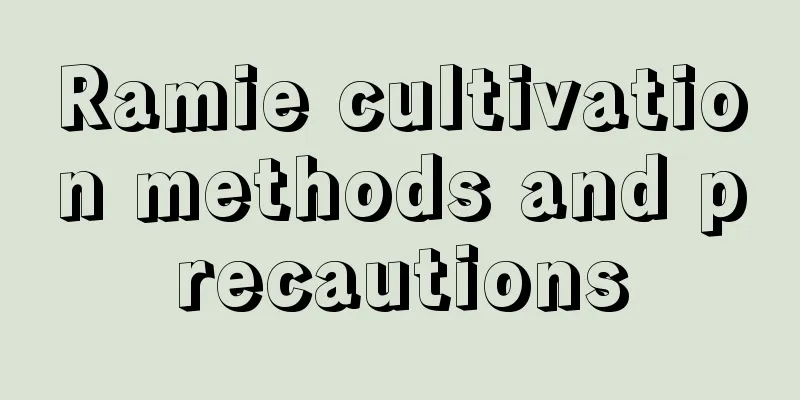Smooth sailing breeding methods and precautions

1. Breeding methods1. Soil: Soil is the key to successful planting, and its requirement is that the texture is loose and not too sticky, which will hinder the growth of the plant. You can prepare it yourself at home, using leaf mold or peat soil plus perlite, etc., which can increase drainage and air permeability. You can also add base fertilizer to increase nutrition. 2. Light: This type of plant is suitable for maintenance in a semi-shaded environment. If it is placed in the wrong position and exposed to strong light, the leaves will turn yellow or even be directly sunburned. Therefore, when maintaining it, you need to pay attention to the placement and place it in a place with bright scattered light for maintenance. 3. Water: It has very high requirements for water, so it is very necessary to keep the soil in the pot moist, but it must not be watered too much. If you water too much, a lot of water will accumulate at the roots, causing rot. During the dry summer months, you can sprinkle some water around to increase the humidity. 2. PrecautionsThe pot needs to be changed every 1 to 2 years, and the old and dead roots should be trimmed and new soil should be replaced. |
>>: Bletilla striata planting technology
Recommend
The difference between golden thread vine and silver thread vine
Morphological differences Golden thread vine: Its...
Is the fortune tree a shade or sun-loving plant?
Does the fortune tree prefer shade or sun? The mo...
How to save seeds of Eucommia ulmoides
How to get Eucommia seeds Eucommia ulmoides, also...
When is the right time to repot succulents?
Time to repot succulents As succulents grow, as t...
How to change the soil of banyan bonsai
Banyan bonsai soil changing time Usually, the soi...
Milan pests and control methods
Scale insects Hazard manifestations There are man...
Can Amaryllis be watered with beer water?
Can Amaryllis be watered with beer water? Amaryll...
What kind of plant is Victoria regia? Is it an aquatic plant?
1. What kind of plant is Jade Lotus? This type of...
Can rose seeds be planted?
Can rose seeds be planted? Rose seeds can be plan...
What should I do if the bottom of the money string is dry?
1. Caused by watering 1. Too much water Sometimes...
Which plants can move?
sunflower The sunflower gets its name because the...
How long does it take for Jade Leaf to adapt to the pot?
Jade leaves acclimatization time After the Jade P...
The difference between lotus orchid and spring sword
1. Leaf Difference The leaves of Cymbidium are br...
Suitable growth environment for yam planting conditions
Yam Planting Conditions Chinese yam likes an envi...
What are the cultivation methods and precautions of Euphorbia pulcherrima?
Introduction to Qilin Palm Euphorbia tridentata i...









